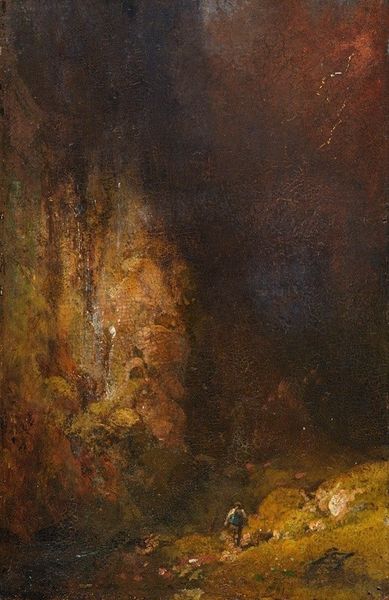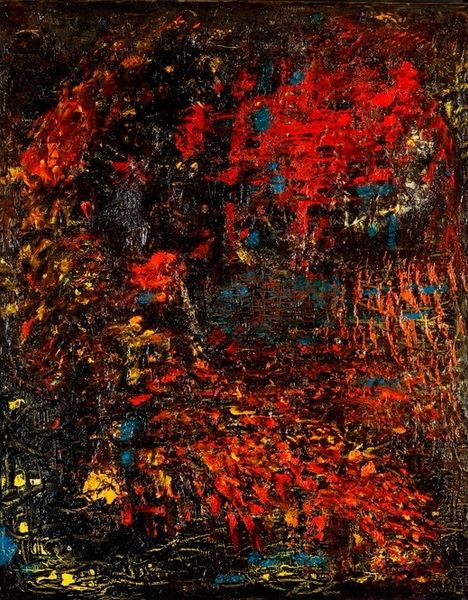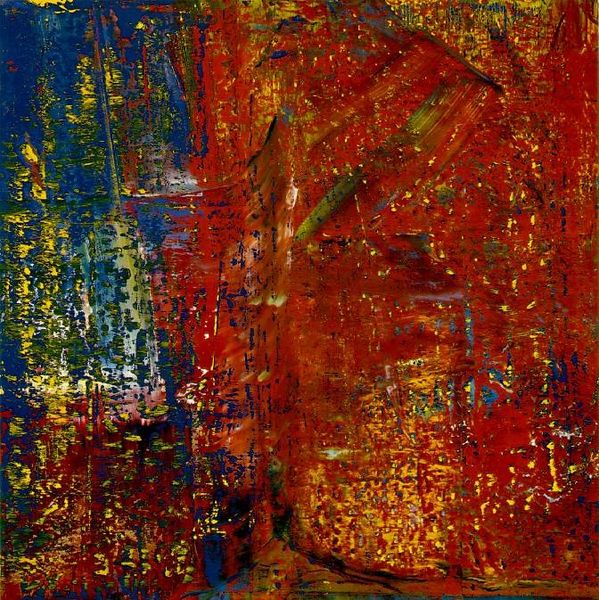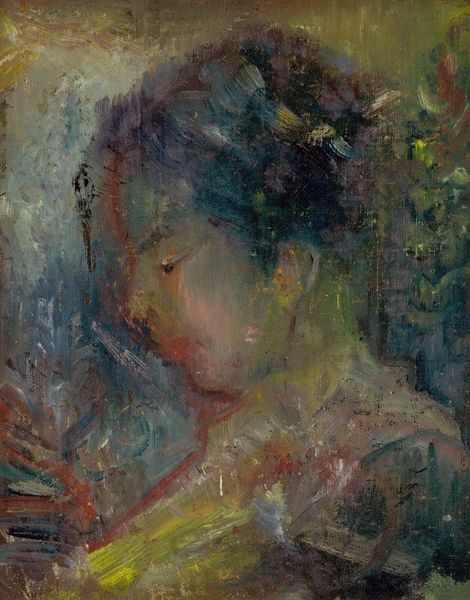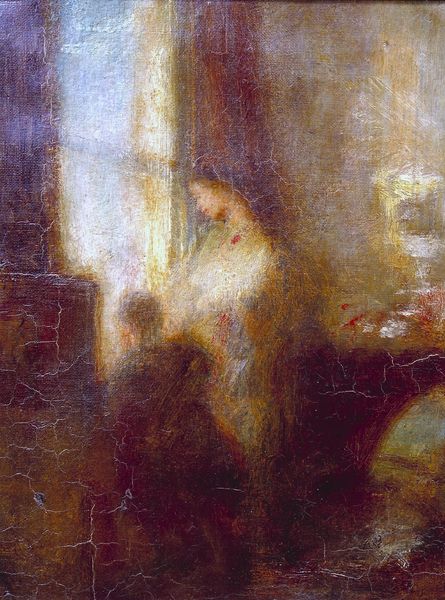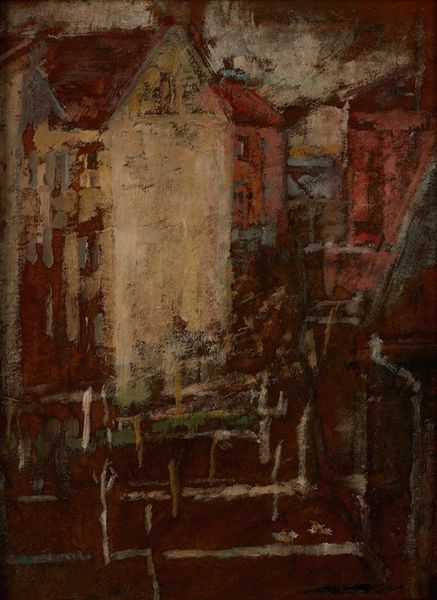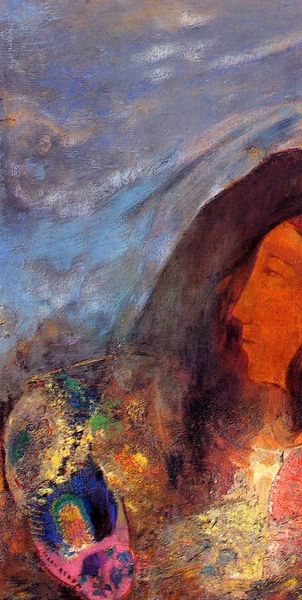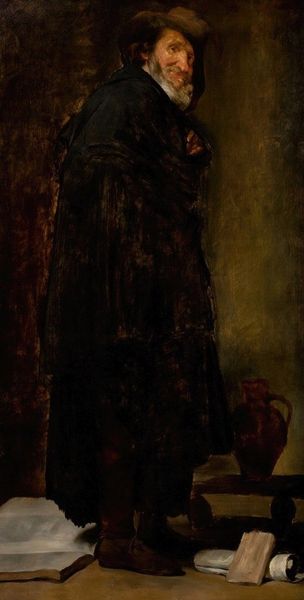
Copyright: Public domain
Curator: Here we have Ilya Repin's "Ecce Homo" from 1867, rendered in oil paint. Editor: The title itself immediately evokes such pathos! There's something almost oppressive about the composition. A single torch casts harsh light across the subject... it's all rather somber, wouldn't you say? Curator: Absolutely. Considering Repin was only in his early twenties when he created this work, it reveals a profound engagement with themes of suffering, injustice, and the weight of religious narratives. What’s striking to me is how he translates the "Ecce Homo"—"Behold the Man"—motif into a broader commentary on social power and the persecuted. Editor: The flame of the torch seems to me to be almost a representation of knowledge itself, or perhaps hope? In iconography, light traditionally pierces darkness; is Repin presenting the idea of some kind of transcendent awareness emerging from the shadows of injustice? Curator: That's an intriguing thought! You know, examining Repin's involvement with the progressive movements of his time provides insight here. The image certainly aligns with the critical perspectives concerning authority. We need to understand what power structures are involved here. It reflects Repin’s concerns for the underclasses, then. Editor: Perhaps the dimly lit area around the subject mirrors the societal shadows obscuring justice, and that torch stands for those brave individuals seeking clarity. The limited use of light seems less about simple illumination and more a conscious choice emphasizing societal struggles in seeking justice, don’t you think? Curator: That’s it, isn’t it? It brings attention to the societal frameworks that produce, and maintain, such injustice in the first place! Editor: Exactly! By highlighting these powerful religious moments throughout history, this painting allows its audience to seek a richer cultural understanding, connecting to our collective experience, and how we assign and understand symbols that tie directly to humanity's sense of power and morality. Curator: Examining this “Ecce Homo” certainly encourages contemplation. Viewing Repin's work provides opportunity for us to consider questions concerning injustice that prevail today, as well. Editor: I agree entirely. “Ecce Homo" urges reflection upon both timeless truths of visual symbols, while pushing those to consider the emotional contexts imbued across cultural memory.
Comments
No comments
Be the first to comment and join the conversation on the ultimate creative platform.

